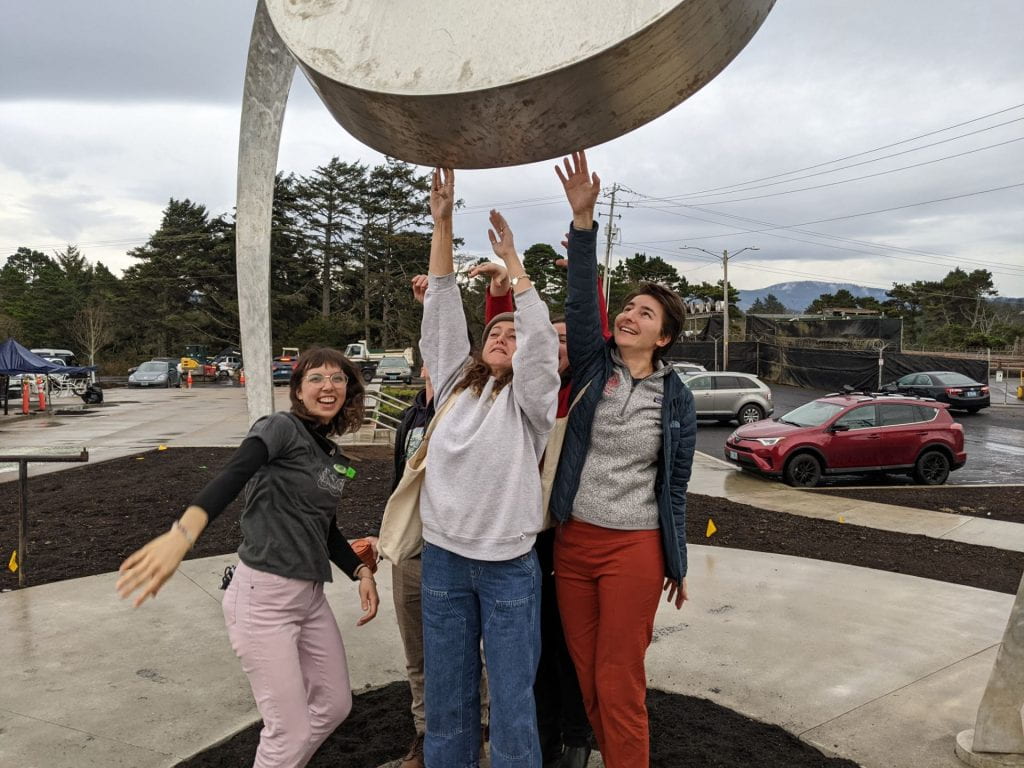
Lincoln City Cultural Center’s RARE Member Zoe Vincent (left) poses with other RARE Members as they feel the weight of one of the exhibits.
For the past eight months, drivers on Highway 101 in central Lincoln City have been the curious audience for a creative work in progress, a steadily progressing construction site that wrapped around the historic Delake School at 540 NE Highway 101.
The project is the long-awaited Lincoln City Cultural Plaza, an exterior improvement designed to provide accessibility and safety along with public art, lovely landscaping and inviting gathering spaces, according to Lincoln City Cultural center Director Niki Price.
The non-profit Lincoln City Cultural Center administrators and board members held a community celebration Nov. 18.


The Activation Party schedule featured two ribbon cuttings, live music and dance, scavenger hunt, a community art project and a barbecue lunch, courtesy of event sponsor NW Natural.
Three of the Plaza’s new permanent installations were dedicated, the Lincoln City Rotary’s “Music in the Parks” instruments were played for the first time, and the sponsored pavers and Audubon “Bird Bricks” were dedicated.
Society members sponsored 47 pavers in order to dedicate them to native bird species. The Society has created an official “Bird Bricks” brochure that features thumbnail photos of all the species listed on the club’s sponsored pavers.
Those who gathered at the Nov. 18 celebration also listened to the first reading of “Why They Came,” the original poem that will be engraved into the new Poetry Path.
“We’re so thankful for the members, volunteers, donors and supporters who made the Cultural Plaza possible for our nonprofit organization,” Cultural Center board president Dorcas Holzapfel said. “The Plaza is about expanding our city’s capacity for arts, culture, fun and education.”
While the project has reached an important stage of “substantial completion,” several elements are still in progress, according to Price.
The Kiwanis Outdoor Art Classroom and the Land Acknowledgement Wind Wall, are scheduled for completion by the end of the year.
“We’re looking forward to dedicating those spaces as well. Stay tuned, Lincoln City. This Plaza will always be a work in progress, I think. Changing and growing along with the people who use it,” Price said.
The Cultural Center’s entry on the east side of the building is described as he broad and inviting and handicapped accessible.
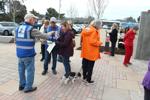
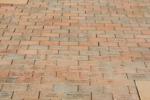
“This welcoming pedestrian area is built upon community support, quite literally, because it’s the home of more than 450 personalized pavers and three sponsored benches,” Price said. “Here you’ll find the names of loved ones, special experiences, birthdays and plenty of inside jokes, through a project that raised more than $75,000 from 2019 to 2023.”
At the northwest corner of the Plaza visitors will find a circular seat wall surrounding three large musical instruments that will be open every day of the year, fully accessible and free to the public.
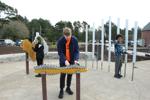
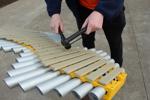
This installation was conceived and funded by the members of the Rotary Club of Lincoln City as its second “Music in the Parks” donation to the community. Made by Freenotes Harmony Park of Telluride, Colo., the instruments are made of anodized aluminum and have been mounted in-ground. They are:
Swirl – A pentatonic instrument that delivers resonating sounds, with a bright tonal quality. Its range is alto/soprano, with C Major on the left and A Minor on the right.
Contrabass Chimes – Seven vertical chimes, 4 inches wide and 7 to 9 feet tall, to be played with one of two mallets. Its range is bass/tenor tuned to the key of C Major.
Imbarimba – Combining elements of two classic African instruments, the marimba (a resonated xylophone) and the kalimba (thumb piano), with fiberglass elements that mimic the marimba’s wood tones. Its range is alto/soprano, with C Major on the left and A Minor on the right.
The official “first play” activation was provided by students from the Taft 7-12 band program, with remarks by Rotary president Nick Lupo, Rotarian Estle Harlan and state Sen. Dick Anderson, and a ribbon cutting hosted by the Lincoln City Chamber of Commerce.
The Poetry Path
One of the most visible elements of the Cultural Plaza, the Poetry Path is a unifying public art installation that combines form and function as it traverses the west and north sides of the Plaza design.
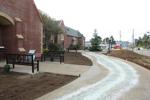
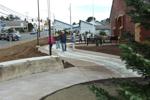
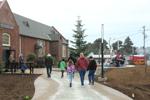
The path is embedded with swaths of colorful aggregate that embrace the words of an original community poem, “Why They Came.”
This meandering path was designed by the landscape architects at Shapiro Didway, led by Cultural Plaza design project manager Jessel Champoux. A central element of the design from the beginning, the path is a drive-able walkway that provides ADA-compliant access for people as well as convenient loading for outdoor event vendors. The addition of aggregate, including a central band of chips that will glow in the dark, was a collaboration between Shapiro Didway and the concrete specialists at Cascade Civil Corp.
“Why They Came” was the product of a collaborative process led by John Fiedler, a local poet and a teacher at St. James Santiago School. Fiedler and 25 community members gathered at the Driftwood Public Library in July 2023, exploring the history, culture, languages and shared experiences of the people who live in what is now Lincoln City. Workshop participants generated ideas and phrases that were recorded by Fiedler and incorporated into the final poem.
Sandblasted in letters that are 2 inches tall, the poem begins at the south end of the Plaza and can be read (from left to right) as the viewer is facing west.
The Poetry Path was funded by The Roundhouse Foundation, The Marie Lamfrom Charitable Foundation, the Estate of Lloyd and Marlene Ankeny, Explore Lincoln City Community Partnership Fund, and the members of the Lincoln City Cultural Center. The writing process was supported by a public program grant from Oregon Humanities and the National Endowment for the Humanities.
This article first appeared on The Lincoln City News Guard and is republished here under a Creative Commons license.